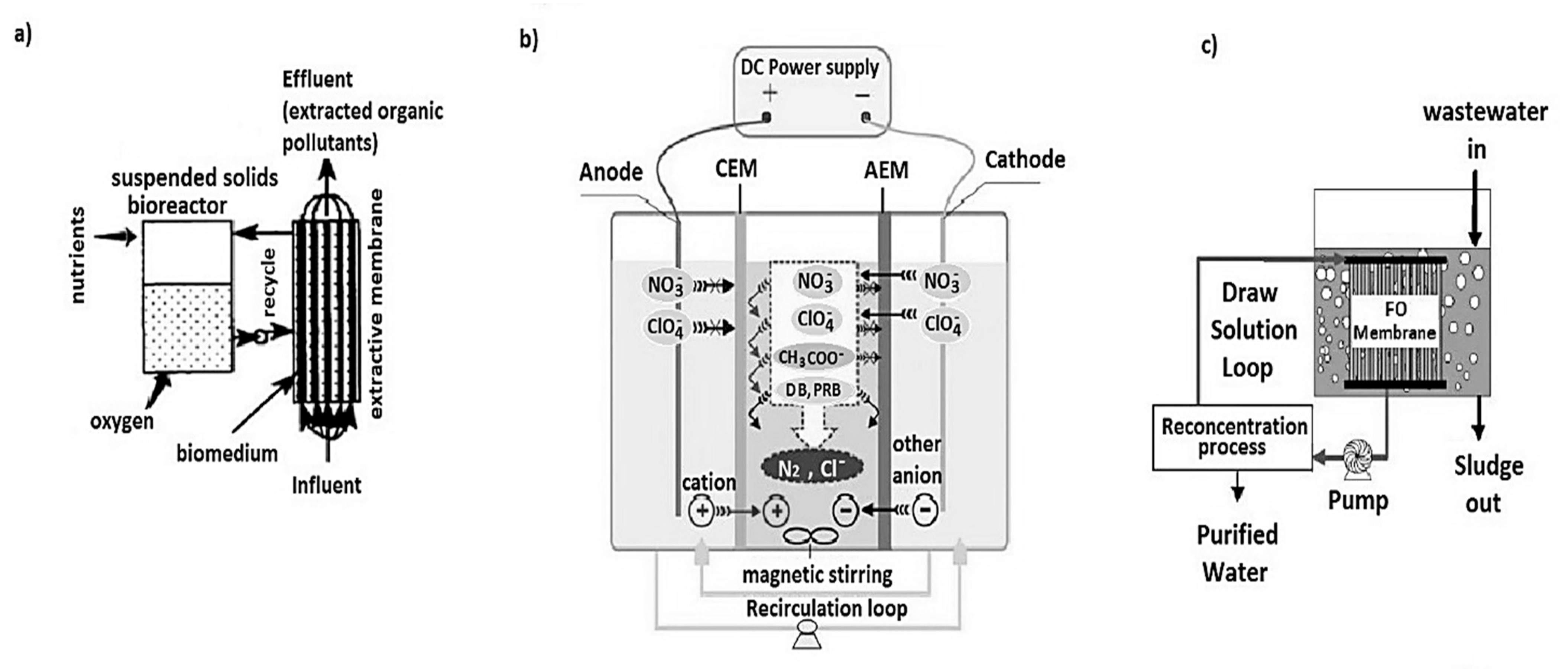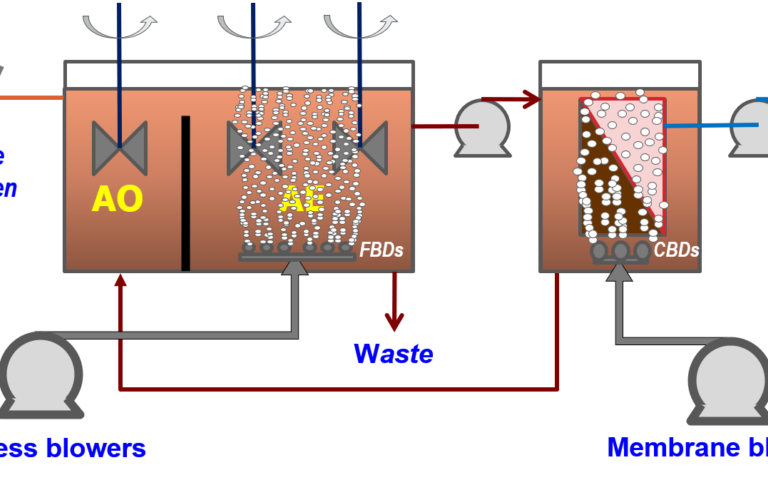Membrane Bioreactors Clarified: Reliable Solutions for Clean Water
Membrane layer bioreactors (MBRs) have become a sophisticated service for dealing with the pushing challenges of wastewater therapy. By integrating organic processes with sophisticated membrane layer filtration, MBRs not just enhance the top quality of cured water yet additionally lower the spatial requirements of treatment centers. As ecological concerns escalate, the function of MBR modern technology in advertising sustainable water monitoring comes to be increasingly significant. The intricacies of their procedure, advantages, and potential applications merit a closer assessment to totally recognize their influence on the future of water treatment.

What Are Membrane Layer Bioreactors?
Membrane layer bioreactors (MBRs) are innovative wastewater treatment systems that combine biological deterioration procedures with membrane purification technology. This combination permits for the reliable elimination of pollutants from water, making MBRs a preferred choice in numerous applications, including metropolitan wastewater treatment and commercial effluent monitoring.

One of the vital benefits of MBRs is their capacity to produce top notch effluent, frequently ideal for reuse in watering or industrial procedures. In addition, MBRs require a smaller sized footprint compared to standard therapy systems, making them ideal for urban settings where space may be restricted.
Moreover, MBRs can effectively deal with varying influent loads and are less vulnerable to the impacts of harmful shocks. These attributes add to their growing appeal as a sustainable solution for attending to the raising need for clean water while lessening environmental impacts.
How Membrane Layer Bioreactors Job
While the operation of membrane bioreactors (MBRs) might appear complicated, it fundamentally revolves around the harmony between biological procedures and membrane filtration. MBRs incorporate an organic therapy process, generally activated sludge, with a membrane layer separation unit to deal with wastewater successfully.
In an MBR system, wastewater is initial introduced right into a bioreactor where bacteria deteriorate natural matter and other pollutants. The biological task decreases the concentration of contaminants while promoting the development of biomass. Following this biological therapy, the mixed alcohol is subjected to membrane layer filtration, which can be microfiltration or ultrafiltration, relying on the desired effluent top quality.
The membranes function as a physical barrier, permitting water and small solutes to pass while maintaining suspended solids and larger particles. This enables the system to keep a high focus of biomass within the reactor, boosting the treatment effectiveness.
In addition, the constant splitting up of treated water from the biomass assists in a compact style and decreases the footprint of the treatment facility. On the whole, the combination of biological deterioration and membrane layer filtration in MBRs causes efficient and trustworthy wastewater therapy, ensuring top notch effluent appropriate for different applications.
Advantages of MBR Innovation
One of the vital advantages of membrane bioreactor (MBR) modern technology is its capability to produce top notch effluent with a significantly minimized impact contrasted to traditional wastewater treatment methods. MBR systems effectively combine organic treatment and membrane layer filtering, resulting in superior removal of pollutants, consisting of suspended solids, official statement microorganisms, and natural issue. This capability causes effluent that typically fulfills or exceeds rigid governing requirements for reuse and discharge.
Furthermore, MBR modern technology permits higher biomass focus, which boosts the treatment efficiency and lowers the called for reactor volume. This compact design is particularly useful in city locations where space is limited. The operational versatility of MBR systems also indicates they can adapt to varying influent qualities and circulation prices, making them ideal for a large range of applications.
In addition, the minimized sludge production related to MBR procedures adds to decrease functional and upkeep prices. The membrane layers function as a physical barrier, reducing the threat of obstructing and allowing longer operational periods between cleansing. On the whole, the advantages of MBR technology make it an eye-catching remedy for lasting wastewater therapy, resolving both ecological issues and the need for reliable source monitoring.
Applications of Membrane Layer Bioreactors
With their convenience and effectiveness, membrane bioreactors (MBRs) discover applications across numerous sectors, consisting of local wastewater therapy, commercial procedures, and also water recovery. In municipal settings, MBRs offer a compact solution for treating wastewater, successfully removing pollutants while concurrently generating high-quality effluent that fulfills rigid regulative requirements. This makes them specifically appropriate for locations with minimal area.
In industrial applications, MBR technology is used for treating process water, particularly in markets such as food and drink, drugs, and petrochemicals. These sectors benefit from MBRs' ability to handle high natural loads and their efficiency in recouping valuable sources from wastewater, such as nutrients and water.
Additionally, MBRs play an essential role in water reclamation efforts, making it possible for the look here reuse of treated wastewater for watering, industrial procedures, or perhaps as safe and clean water after additional treatment (Membrane Bioreactor). Their efficiency in removing pathogens and toxins makes them a trusted option for ensuring water quality in different reuse applications
Future of Water Treatment Solutions
The future of water therapy options is poised for transformative advancements driven by technical innovation and boosting ecological awareness. As international water scarcity comes to be a pressing problem, brand-new approaches, consisting of membrane bioreactor (MBR) systems, are readied to play a critical duty in enhancing the effectiveness and sustainability of water treatment procedures.
Emerging innovations such as expert system and maker discovering are expected to optimize therapy procedures, enabling real-time surveillance and anticipating maintenance. This will improve the overall integrity and performance of water treatment centers. In addition, improvements in membrane materials, such as graphene and nanofiltration, guarantee to boost permeation prices and decrease fouling, bring about lower power usage and operational prices.
Additionally, the combination of eco-friendly energy sources into water therapy plants will contribute to greener practices. The circular economic situation model will also gain grip, urging the recovery of useful sources from wastewater, such as nutrients and energy.
Final Thought

Membrane bioreactors (MBRs) have actually arised as an advanced solution for dealing with the pushing challenges of wastewater treatment. By incorporating organic procedures with innovative membrane layer filtering, MBRs not only enhance the top quality of treated water however also minimize the spatial demands of therapy centers.One of the essential benefits of membrane layer bioreactor (MBR) innovation is its ability to generate top quality effluent with a significantly reduced impact contrasted to conventional wastewater treatment methods.With their adaptability and effectiveness, membrane visit the website layer bioreactors (MBRs) locate applications throughout various industries, consisting of municipal wastewater therapy, commercial processes, and also water recovery.In conclusion, membrane bioreactors represent a substantial advancement in wastewater therapy innovation, incorporating organic procedures with reliable membrane filtering to generate high-quality effluent.